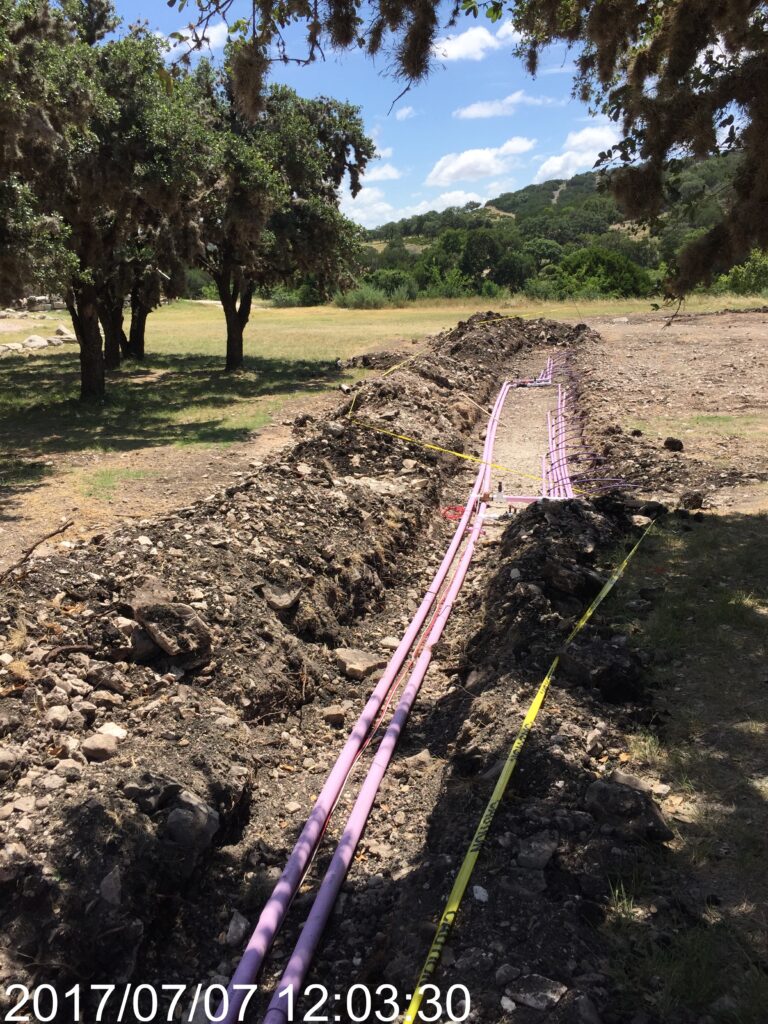For zero discharge systems, the smallest footprint is for drip irrigation systems. These systems use small diameter drip tubing, with pressure-compensating emitters. Financially, development can come to market more quickly, as the likelihood of a “contested case hearing” is greatly reduced, as the permit application is generally not contested by downstream groups. This can lead to over a year’s reduction in time, reducing interest carry costs, and changes in market conditions.

Below are some resources for engineers and developers in the design of zero-discharge systems.
TAC Chapter 210, Use of Reclaimed Water
https://texreg.sos.state.tx.us/public/readtac$ext.ViewTAC?tac_view=4&ti=30&pt=1&ch=210
Subsurface Area Drip Disposal Systems
https://texreg.sos.state.tx.us/public/readtac$ext.ViewTAC?tac_view=4&ti=30&pt=1&ch=222
Onsite Sewage Facilities
https://texreg.sos.state.tx.us/public/readtac$ext.ViewTAC?tac_view=4&ti=30&pt=1&ch=285
Design Guide for Drip Irrigation
https://www.netafim.com/499749/globalassets/products/drippers-and-dripperlines/drip-irrigation-
system-handbook.pdf
Wastewater Reuse and Drip Dispersal Design Guide
https://www.netafimusa.com/bynder/8D06B0DF-C84A-46F9-A45069017E245C8B-w062-ww-design-
guide.pdf
Specific engineering questions can be addressed to: info@texasonsite.com
